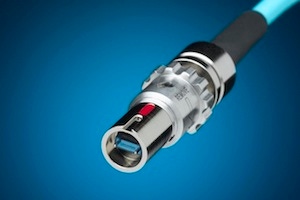Why Intelligent Medical Device Demand is Surging
April 7, 2011

Medical equipment designengineers are constantly challenged to develop leading-edge electronic devices thathelp improve patient care. Over the last decade or so, we have seen remarkableadvances in the medical equipment marketplace, ranging from easy-to-use homemonitoring devices for blood pressure and blood sugar levels to complexdiagnostic imaging machines, sophisticated robotics and laser surgery equipmentused in hospital operating rooms.
One significant trend is themedical industry's growing adoption of the same electronic design strategiesand components that have propelled the rapid growth of the consumer electronicsand telecommunications industries in recent years. New design strategies havebeen built around increased demand for miniaturization, mobility andportability - as evidenced by the proliferation of next-generation smart phonesand other handheld devices, as well as notebook and tablet computers.
It is easy to understand whythese same market forces - the demand for increased miniaturization, mobility,portability and ease of use - are similarly driving convergence of electronicsand medical devices. With rising healthcare costs has come increased relianceon patient-administered home monitoring and therapeutic devices. On the healthcareprovider side, there is greater demand for more innovative and affordableelectronic equipment for use in diagnostic labs, hospitals and clinics.
Why Intelligent Medical Device Demand is Surging_A |
Key Technology Trends
As much as the following trendsare impacting the creations of medical device design engineers, they are alsoaffecting the key elements required by engineers to design unique andsolutions-based medical products.
Mobility. Telemedicine is the delivery of healthcare servicesand information via wireless telecommunication technology. Two types oftelemedicine are directing associated device development: The transmission of diagnosticimages and test results between and among medical professionals via broadbandnetworks; and establishing direct connections between physicians and patientsat home.
Fiber-Optic and Laser Technology. In digital imaging and diagnostic applications,optical fiber cables are increasingly replacing copper-based cables. Fiber-opticconnectivity provides higher speeds for faster downloads and ensures morereliable, distortion-free electrical signal transmission, thereby improving theimage quality. Optical cables can eliminate ground loops and EMI/RFI, whichprovides better clarity on video displays of MRI and X-Ray imaging.
Optical fiber is also beingused in sophisticated laser surgical devices, which are becoming more common asa preferred tool for performing a multitude of minimally invasive therapeuticprocedures. In laser surgery, the laser's light is transmitted using flexibleoptical fiber smaller than half a millimeter in diameter.
Miniaturization and Portability. The demand for smaller and more portable form factorsfor medical devices is driving the miniaturization of embedded electroniccomponents and interconnects to unprecedented micro sizes. Microminiatureconnectors, for example, designed for use in mobile phones and handhelddevices, have now evolved into viable medical device solutions.
In selecting microconnectors, product designers need to carefully assess and compare marketplaceofferings to ensure that all performance and reliability requirements will bemet. One popular connector available in the marketplace today has an extremelysmall (0.40 mm) pitch, a low-profile height of 0.70 mm, and comes in severalconfigurations to accommodate a variety of device designs.
User Interface Keypads and Switches. Ease of use and aesthetics are key factors indesigning user interface pads and touch-point switches for home monitoringmedical devices. Adapted from the white goods industry, membrane switches notonly provide an excellent value-to-performance ratio, they are also rugged,easy to clean and intuitive to use. Design elements may include such additionsas embedded LEDs, dome arrays, silicone rubber keypad assemblies andmulti-language capabilities.
Critical Design Factors
Major factors medical devicedesigners must consider to ensure each product's safety, performance andreliability include: the product's operating environment (e.g., hospital, diagnostic lab or home), interconnect sealingrequirements, bio-compatibility, intuitive operation, resistance tosterilization and cycle life durability.
Once these factors have beenconsidered, designers may find it necessary to tweak or modify COTS (commercialoff-the-shelf) components to meet specific application requirements. In manycases, taking a MOTS (modified off-the-shelf) approach can be a practicalalternative that allows for some level of customization without the costburdens of custom tooling.
Anthony J. Kalaijakis isstrategic medical marketing manager for Molex Inc.
Click herefor more information.
About the Author(s)
You May Also Like






